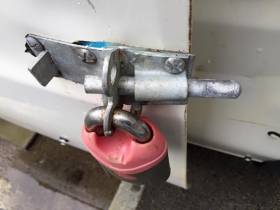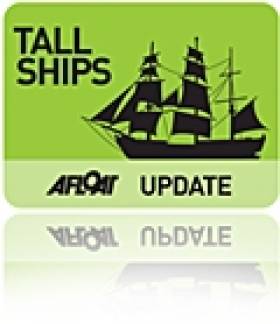Displaying items by tag: Crime
Burglary At Lahinch Surfing School
#Surfing - Lahinch Surf Experience has asked the public to be on the lookout for a number of items stolen from a van outside the surfing school's premises overnight.
According to a Facebook post this morning (Saturday 26 March), some 40 pairs of Alder Edge boots and around 10 O'Neill wetsuits were taken in the burglary.
The business is asking anyone who might be offered any of these items for sale to contact them or Ennistymon Garda Station.
The news comes just hours after the Shielbaggan Outdoor Centre saw the return of a trailer full of kayaks that had been stolen from its premises in Ramsgrange, Co Wexford earlier this week.
Kitesurfers Want Action Over Dublin Beach Thefts
#Kitesurfing - "Countless" numbers of vehicles belonging to kitesurfers and other beach users have been broken into on Dublin beaches over the past year, according to the Irish Kite Surfing Association (ISKA).
And as the Dublin People reports, the problem only seems to be getting worse - with three cars damaged and burgled at Burrow in Sutton and Dollymount Strand on Bull Island over the weekend of 12-13 October last.
According to ISKA secretary Nicola Murphy, the latest spate of break-ins occurred despite an additional Garda presence for a kitesurfing event in Sutton that weekend.
And the brazen nature of the broad-daylight thefts has both kitesurfers and local beach users concerned, with tourists among those falling victim to what's being described as a very organised criminal activity.
The Dublin People has more on the story HERE.
Body Found On Portmarnock Beach Is Week's Second Grisly Discovery
#Crime - The Irish Times is reporting that a body has been discovered on Portmarnock Beach in North Dublin this morning (12 September).
The news comes just two days after the body of a man in his 40s was found on Mornington Beach in Co Meath further up the coast.
Gardaí have since launched a murder investigation following that grisly find, according to RTÉ News.
Thieves Raid Astrid Wreck Under Cover Of Darkness
#Astrid - The ship's bell and compass are among the items stolen in a dastardly raid on the wreck of the tall ship Astrid near Kinsale, as The Irish Times reports.
Owner of the near-century-old brig Pieter De Kam said that while he is "eternally grateful to the Irish people" for the rescue of all 30 crew on board when the ship struck rocks last Wednesday (24 July), he is "not grateful to whatever Irish people have gone aboard my ship and stolen my compass, my bell and my binnacle".
Breaking the exclusion zone set up around the tall ship - which went down after striking rocks and taking on water in strong winds and heavy seas while taking part in The Gathering Cruise - it appears the thieves slipped in by nightfall at low tide last Friday night (26 July) to grab their ill-gotten loot.
Though the 42-metre sail training vessel remains mostly intact, despite her ordeal, in the water near the Sovereign Islands off Ballymacus Point, it is unlikely that she will sail again due to the severity of damage to her hull.
Cork Hosts Conference on Maritime Crime
#MARINE CRIME - TheJournal.ie reports that investigators the world over are gathered at the Silver Springs Moran Hotel in Cork for a conference on maritime crime. Scroll down for photos of the event by Bob Bateman below.
The International Association of Marine Investigators conference - now in its 15th year - will be discussing topics from drug imports to accident reconstruction.
The full conference agenda is available to read or download HERE.
The I.A.M.I, (Irish Association of Marine Investigators) Conference moved this morning to the premises of Marine Motors, Passage West Co. Cork, where they were welcomed on behalf of Passage West Town Council by Councillor Marcia D'Alton who gave the delegates a very interesting address on Passage West and it's long history of Maritime Associations. She also spoke of the relationship with the first steamship to sail the Atlantic from Passage West under Captain d'Esterre Roberts one of whose direct descendants, Grattan d'Esterre Roberts was also present. Also in attendance were Gerry Greenway, Manager Revenue Maritime Operations, Kevin Higgins of Marine Motors, Michael O'Donovan of Oysterhaven Boats and Robert Kennedy of O'Leary Insurance Insurances Ltd.
Sergeant Liam Grimes of the Garda Water Unit explained the hugely important function of the Association and the co-operation and exchange of information that exists throughout Europe between European Marine Police Units and European Marine Insurance Investigators in their endeavours to combate the ever escalating theft of boats, engines and all marine equipment. Their presentations and methods of detection explained were most interesting to listen to.
The Conference consists of workshops and presentations from all units including the Garda water unit. The Water Unit incorporates the Garda Sub Aqua Unit and this year alone attended the Volvo Ocean Race at Galway, the Tall Ships Race in Dublin and Cork Week to name but a few. They attended events right around the coast and are now based in Athlone. The Conference was opened yesterday at Silversprings Moran Hotel by Cork Chief Superintendent Tom Hayes. It is thefifteenth Annual Conference of the Association and the first to be held in Ireland and by all accounts has proven to be highly successful and enjoyable. It concludes this evening with a function at Silversprings Moran Hotel.
Additional reporting by Claire Bateman





























































